- Clone
- HP-3G10 (See other available formats)
- Regulatory Status
- RUO
- Other Names
- NKR-P1A
- Isotype
- Mouse IgG1, κ
- Ave. Rating
- Submit a Review
- Product Citations
- publications
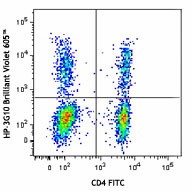
-

Human peripheral blood lymphocytes were stained with CD4 FITC and CD161 (clone HP-3G10) Brilliant Violet 605™.
| Cat # | Size | Price | Quantity Check Availability | Save | ||
|---|---|---|---|---|---|---|
| 339915 | 25 tests | £163 | ||||
| 339916 | 100 tests | £286 | ||||
CD161 is a type II transmembrane glycoprotein, also known as NKR-P1A, that is expressed as a 40-44 kD homodimer. It is a member of the C-type lectin superfamily. CD161 is expressed on a majority of NK cells, NKT cells, and subsets of peripheral T cells and CD3+ thymocytes. It has been reported that Th17 cells are a subpopulation of CD4+CD161+CCR6+ cells. While the biological function of CD161 is not clear, it has been suggested to serve either as a stimulatory receptor or to inhibit NK cell-mediated cytotoxicity and cytokine production. LLT-1 (lectin-like transcript-1, also named as osteoclast inhibitory lectin or CLEC2D) is the ligand of CD161.
Product DetailsProduct Details
- Verified Reactivity
- Human, Cynomolgus, Rhesus
- Reported Reactivity
- African Green, Baboon
- Antibody Type
- Monoclonal
- Host Species
- Mouse
- Immunogen
- Human NK cells
- Formulation
- Phosphate-buffered solution, pH 7.2, containing 0.09% sodium azide and BSA (origin USA).
- Preparation
- The antibody was purified by affinity chromatography and conjugated with Brilliant Violet 605™ under optimal conditions.
- Concentration
- Lot-specific (to obtain lot-specific concentration and expiration, please enter the lot number in our Certificate of Analysis online tool.)
- Storage & Handling
- The antibody solution should be stored undiluted between 2°C and 8°C, and protected from prolonged exposure to light. Do not freeze.
- Application
-
FC - Quality tested
- Recommended Usage
-
Each lot of this antibody is quality control tested by immunofluorescent staining with flow cytometric analysis. For flow cytometric staining, the suggested use of this reagent is 5 µl per million cells in 100 µl staining volume or 5 µl per 100 µl of whole blood.
Brilliant Violet 605™ excites at 405 nm and emits at 603 nm. The bandpass filter 610/20 nm is recommended for detection, although filter optimization may be required depending on other fluorophores used. Be sure to verify that your cytometer configuration and software setup are appropriate for detecting this channel. Refer to your instrument manual or manufacturer for support. Brilliant Violet 605™ is a trademark of Sirigen Group Ltd.
Learn more about Brilliant Violet™.
This product is subject to proprietary rights of Sirigen Inc. and is made and sold under license from Sirigen Inc. The purchase of this product conveys to the buyer a non-transferable right to use the purchased product for research purposes only. This product may not be resold or incorporated in any manner into another product for resale. Any use for therapeutics or diagnostics is strictly prohibited. This product is covered by U.S. Patent(s), pending patent applications and foreign equivalents. - Excitation Laser
-
Violet Laser (405 nm)
- Application Notes
-
Additional reported applications (for the relevant formats) include: inhibition of cytokine production and Western blotting under nonreducing conditions.
-
Application References
(PubMed link indicates BioLegend citation) -
- Gumß M, et al. 2004. Blood 104:3664.
- Exley M, et al. 1998. J. Exp. Med. 188:867.
- Marquez C, et al. 1998. Blood 91:2760.
- Product Citations
-
- RRID
-
AB_11142679 (BioLegend Cat. No. 339915)
AB_2563607 (BioLegend Cat. No. 339916)
Antigen Details
- Structure
- Type II glycoprotein, 40-44 kD homodimer, C-type lectin superfamily
- Distribution
-
NK cells, T subset, subset of CD3+ thymocytes
- Ligand/Receptor
- LLT-1 (Lectin-like transcript-1)
- Cell Type
- NK cells, T cells, Thymocytes
- Biology Area
- Cell Biology, Immunology, Innate Immunity, Signal Transduction
- Molecular Family
- CD Molecules
- Antigen References
-
1. Takahashi T, et al. 2006. J. Immunol. 176:211.
2. Cosmi L, et al. 2008. J. Exp. Med. 205:1903.
3. Aldemir H, et al. 2005. J. Immunol. 175:7791.
4. Rosen DB, et al. 2008. J. Immunol. 180:6508. - Gene ID
- 3820 View all products for this Gene ID
- UniProt
- View information about CD161 on UniProt.org
Related FAQs
Other Formats
View All CD161 Reagents Request Custom ConjugationCustomers Also Purchased
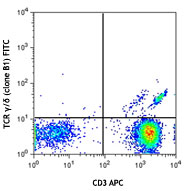
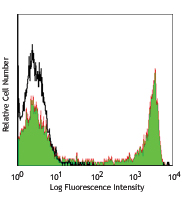
Compare Data Across All Formats
This data display is provided for general comparisons between formats.
Your actual data may vary due to variations in samples, target cells, instruments and their settings, staining conditions, and other factors.
If you need assistance with selecting the best format contact our expert technical support team.
-
Brilliant Violet 510™ anti-human CD161
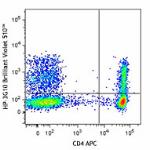
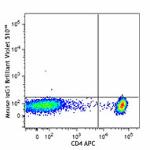
-
FITC anti-human CD161
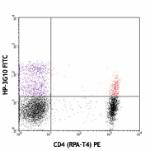
Human peripheral blood lymphocytes stained with HP-3G10 FITC... -
Purified anti-human CD161
-
PE anti-human CD161
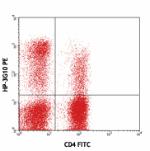
Human peripheral blood lymphocytes stained with CD4 FITC and... 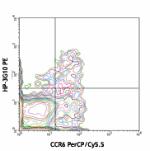
Human peripheral blood CD4+ lymphocytes stained with CCR6 Pe... -
PerCP/Cyanine5.5 anti-human CD161

Human peripheral blood lymphocytes were stained with CD4 APC... -
Alexa Fluor® 647 anti-human CD161
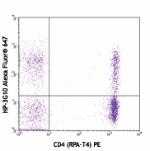
Human peripheral blood lymphocytes stained with HP-3G10 Alex... -
APC anti-human CD161
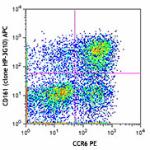
Human peripheral blood lymphocytes were stained with CD4 FIT... 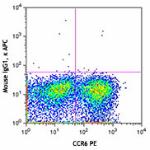
-
Brilliant Violet 421™ anti-human CD161
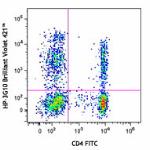
Human peripheral blood lymphocytes stained with CD4 FITC and... 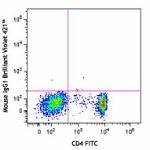
-
Brilliant Violet 605™ anti-human CD161
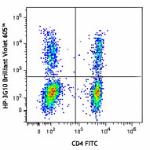
Human peripheral blood lymphocytes were stained with CD4 FIT... -
PE/Cyanine7 anti-human CD161

Human peripheral blood lymphocytes were stained with CD4 FIT... -
Alexa Fluor® 700 anti-human CD161
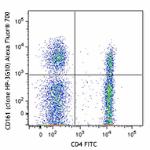
Human peripheral blood lymphocytes were stained with CD4 FIT... 
-
Purified anti-human CD161 (Maxpar® Ready)
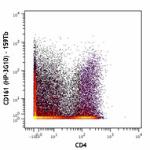
Human PBMCs stained with 145Nd-anti-CD4 (RPA-T4) and 159Tb-a... -
Alexa Fluor® 488 anti-human CD161
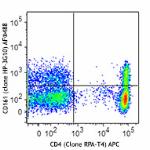
Human peripheral blood lymphocytes were stained with CD4 APC... 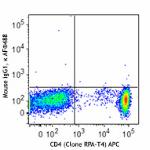
-
Pacific Blue™ anti-human CD161
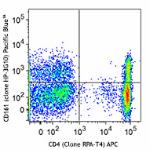
Human peripheral blood lymphocytes were stained with CD4 APC... 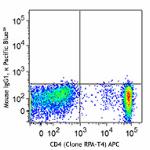
-
APC/Cyanine7 anti-human CD161

Human peripheral blood lymphocytes were stained with CD4 FIT... -
Brilliant Violet 785™ anti-human CD161
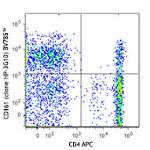
Human peripheral blood lymphocytes were stained with CD4 APC... 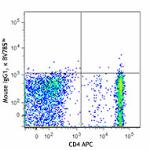
-
Biotin anti-human CD161
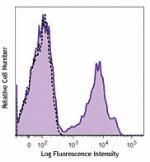
Human peripheral blood lymphocytes were stained with biotiny... -
PerCP anti-human CD161
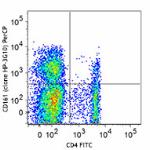
Human peripheral blood lymphocytes were stained with CD4 FIT... 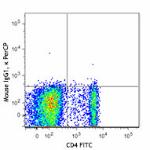
-
PE/Dazzle™ 594 anti-human CD161
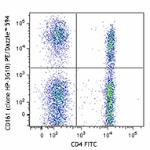
Human peripheral blood lymphocytes were stained with CD4 FIT... 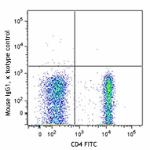
-
APC/Fire™ 750 anti-human CD161
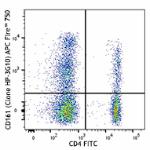
Human peripheral blood lymphocytes were stained with CD4 FI... 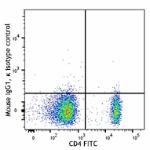
-
TotalSeq™-A0149 anti-human CD161
-
TotalSeq™-C0149 anti-human CD161
-
TotalSeq™-B0149 anti-human CD161
-
PE/Cyanine5 anti-human CD161 Antibody

Human peripheral blood lymphocytes were stained with FITC an... -
TotalSeq™-D0149 anti-human CD161
-
Spark Red™ 718 anti-human CD161

Human peripheral blood lymphocytes were stained with anti-hu... -
Brilliant Violet 711™ anti-human CD161

Human peripheral blood lymphocytes were stained with anti-hu...
 Login / Register
Login / Register 











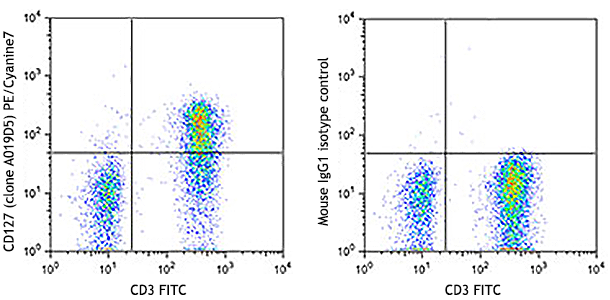
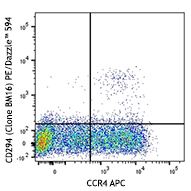



Follow Us